1. Scrubbing the Floors by Hand

Back in the day, cleaning the floors was no small feat. Before the advent of modern vacuum cleaners and floor mops, households relied on scrubbing the floors by hand. Youngsters were often tasked with this chore, and it became a rite of passage. Armed with a bucket, a scrubbing brush, and plenty of elbow grease, they were expected to scrub the wooden or stone floors until they gleamed. The process was hard work, but it was seen as a way to teach responsibility and patience. Plus, it often involved getting on your hands and knees—literally learning the value of hard work. The hours spent scrubbing instilled a sense of discipline and attention to detail. For many, it was a bonding experience with older family members who showed them how to clean properly says Upworthy.
As the floors were scrubbed, the time spent with your thoughts helped you learn to appreciate the importance of cleanliness and the satisfaction of completing a task from start to finish. The act of cleaning was a hands-on lesson in perseverance and focus. It wasn’t just about making the house look good; it was about learning the values that come with hard work. It was the kind of job that made you feel proud once it was done. And when the floors finally shined, you couldn’t help but feel a little more grown up adds WYTV.
2. Washing the Family Laundry
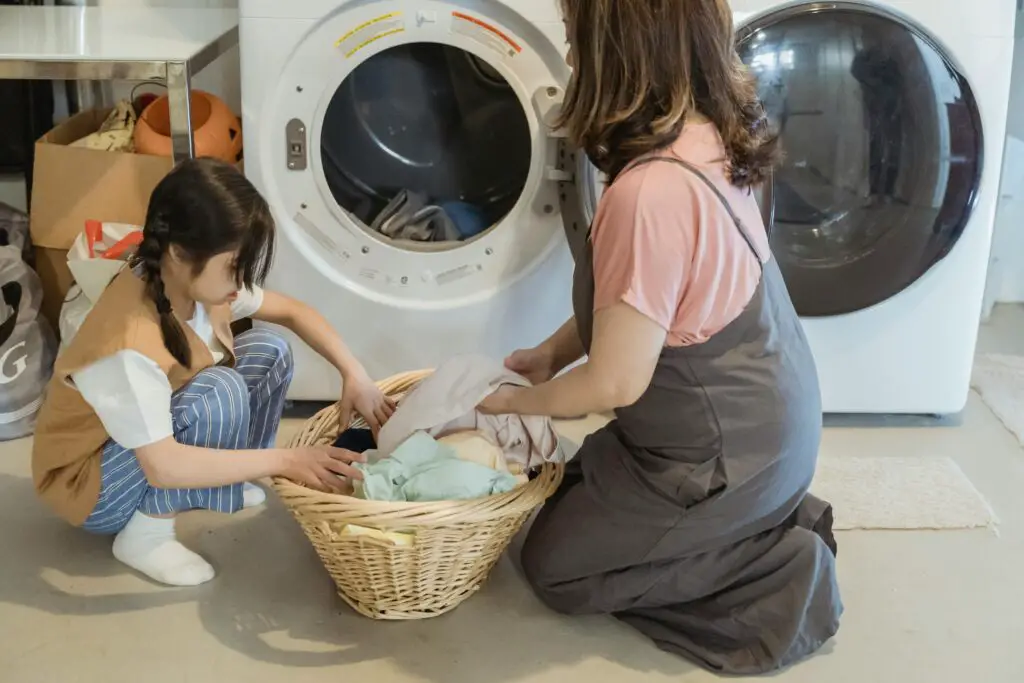
Before laundromats and washing machines, laundry was a major family responsibility, and for kids, it was a rite of passage. The process involved washing clothes by hand—often in large tubs with soap and water, followed by wringing them out and hanging them to dry. For young people, it meant hours of standing by a washboard, scrubbing away dirt and stains. It was a long, repetitive process, but it helped develop a strong sense of work ethic. The smell of fresh soap on damp clothes became a familiar scent of home. As the laundry was folded, the satisfaction of knowing you contributed to the family’s well-being was hard to beat says Cleveland Clinic Newsroom.
This chore wasn’t just about getting the clothes clean; it was a lesson in perseverance. Learning the tricks of washing delicate fabrics versus tough, everyday clothes was another skill. As kids grew up, they became more adept at separating clothes, learning how to manage stains, and using the right detergent. The rhythmic nature of scrubbing and folding clothes created a comforting routine, something that grounded many in their family’s traditions and values shares HOLA.
3. Mowing the Lawn
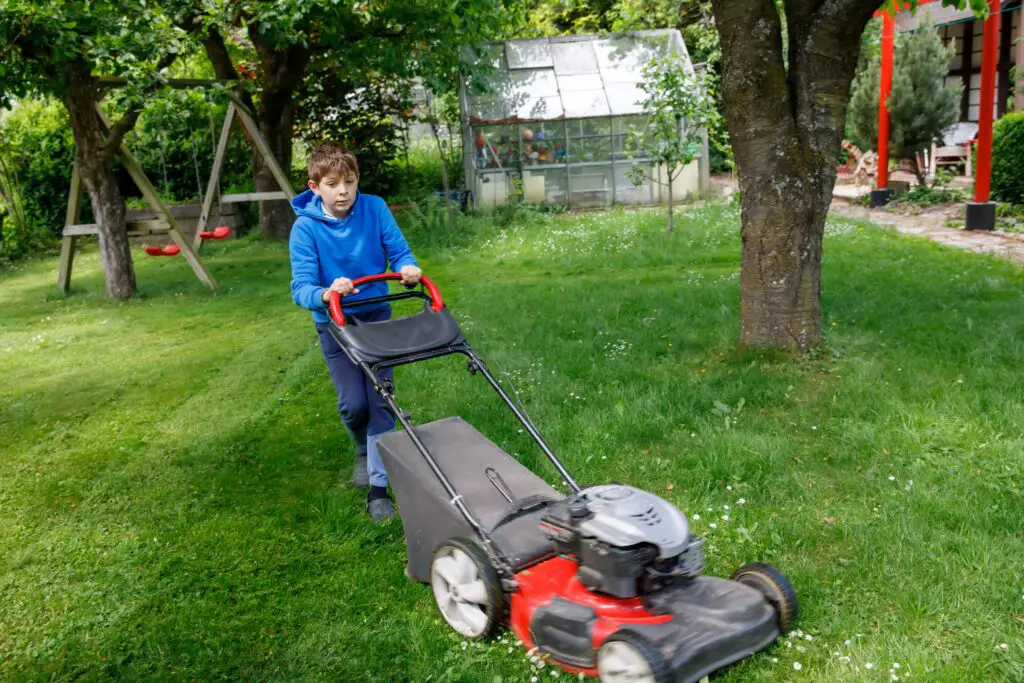
Mowing the lawn used to be one of the most classic chores kids were given to show they could handle responsibility. The lawnmower wasn’t always a push-button, self-propelled model. In fact, many had to push a heavy, non-motorized lawnmower that required considerable muscle. The process taught the importance of precision and paying attention to details. Mowing the lawn wasn’t just about making the yard look neat; it was about creating order out of chaos, learning how to keep a space clean and tidy. This task also provided time for quiet reflection as the hum of the mower created a sort of meditation in motion says Care.com.
At the end of it, after the sweat and effort, there was a real sense of accomplishment. Not only had you made the yard look better, but you’d also learned the responsibility of maintaining your home’s outdoor space. The job of mowing the lawn made you feel connected to the land in a way that instilled pride in your work. For many, it became a tradition passed down from one generation to the next, a rite of passage that marked maturity.
4. Cleaning the Windows
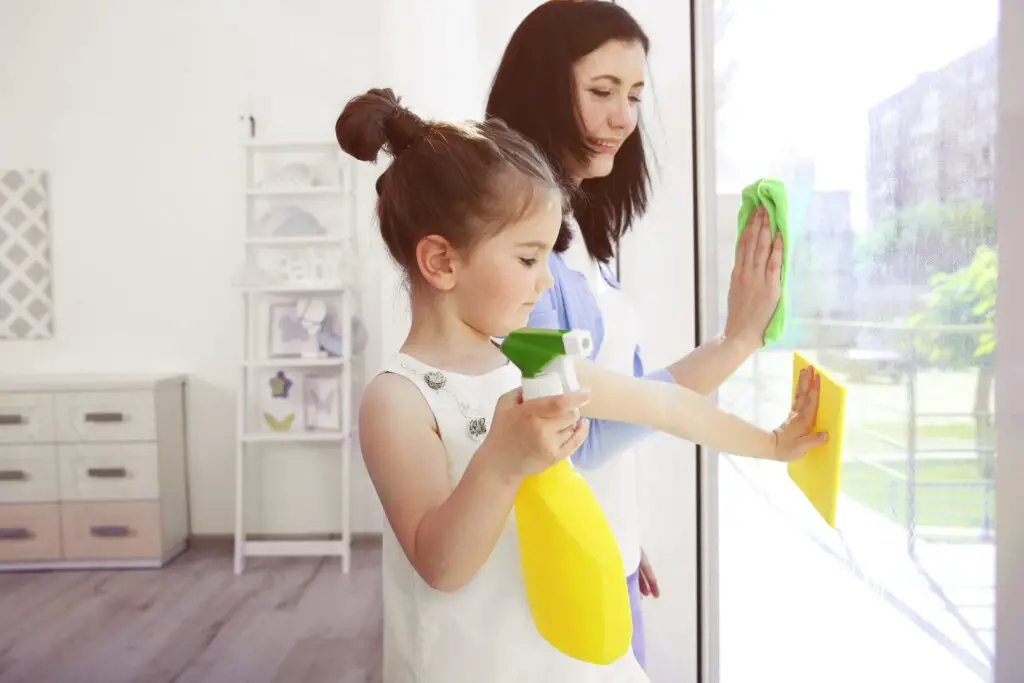
Cleaning the windows by hand was once a daunting task for most children. Armed with a bucket of water, a cloth, and perhaps a bit of elbow grease, kids were expected to climb ladders to scrub away the grime. This chore was no easy feat, requiring both precision and patience to get every streak out. Parents would often insist on a perfect finish, teaching kids the importance of paying attention to the smallest details. When done right, the clean windows let in the sunlight, offering a fresh, bright view of the world. It wasn’t just about making the windows sparkle; it was a lesson in achieving perfection and pride in the work you do.
For many, cleaning the windows was one of the first times they realized that even the smallest tasks can make a huge impact. There was a unique sense of satisfaction that came with standing back and admiring the clarity of a well-done job. It was about taking something simple and making it shine, teaching the value of self-reliance. And when the windows were finally spotless, it wasn’t just the glass that looked clearer; it was the feeling of accomplishment that came with the job.
5. Washing Dishes
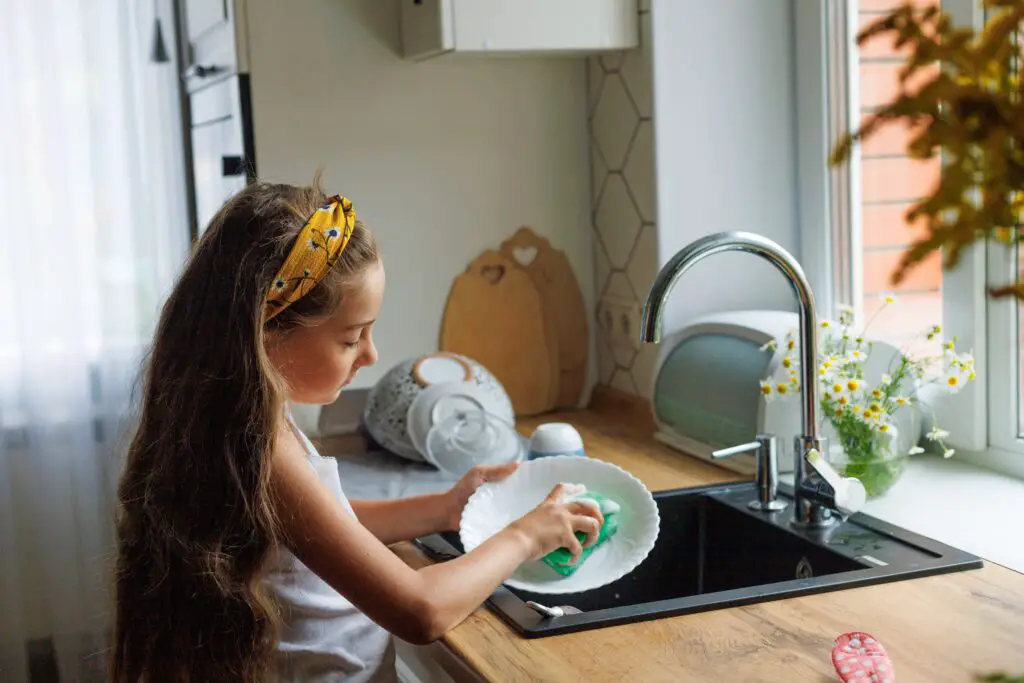
Washing dishes used to be a family affair, and for kids, it was one of the most fundamental chores to learn. In households with no dishwashers, every plate, pot, and cup had to be washed by hand. This task taught kids the value of teamwork if it was a shared chore or responsibility. The sudsy water, the clink of dishes, and the rhythm of scrubbing and rinsing became a daily routine. It was hard work, but it also provided a quiet space for reflection. Doing the dishes also helped kids learn patience, as it could take a while to get everything clean and dry.
Over time, as the dishes piled up and the sink filled with soapy water, kids learned to manage their time. They realized how important it was to get the dishes done right away before they stacked up. The steady hum of water running and the gentle sound of dishes being placed back in the cupboard instilled a sense of accomplishment. At the end of the chore, the clean kitchen felt like a reward, a testament to the hard work that went into it.
6. Chopping Firewood
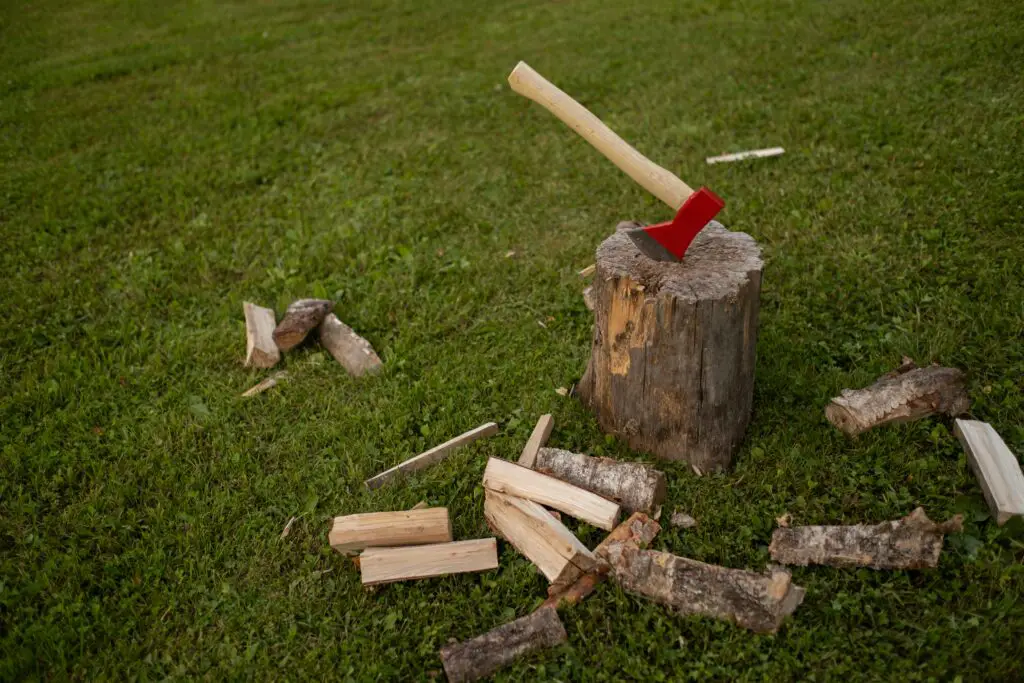
For those who lived in areas where heating came from wood stoves or fireplaces, chopping firewood was a rite of passage. It required both physical strength and a certain level of skill. Kids would learn how to properly use an axe or hatchet, taking pride in cutting logs into firewood for the coming winter. This chore often took place outside, where the scent of the wood and the rhythm of chopping created an almost meditative atmosphere. As each log was chopped, it brought a sense of accomplishment. It wasn’t easy, but the labor involved was a reminder of how much work it took to prepare for the colder months.
Chopping firewood also connected kids to nature in a way that few other chores did. It was about respecting the land, using tools properly, and understanding the effort that went into sustaining a home. After splitting the wood, stacking it neatly in a pile was a satisfying finish to a job well done. In a way, it was like building the foundation for warmth and comfort—one log at a time.
7. Cleaning the Chimney
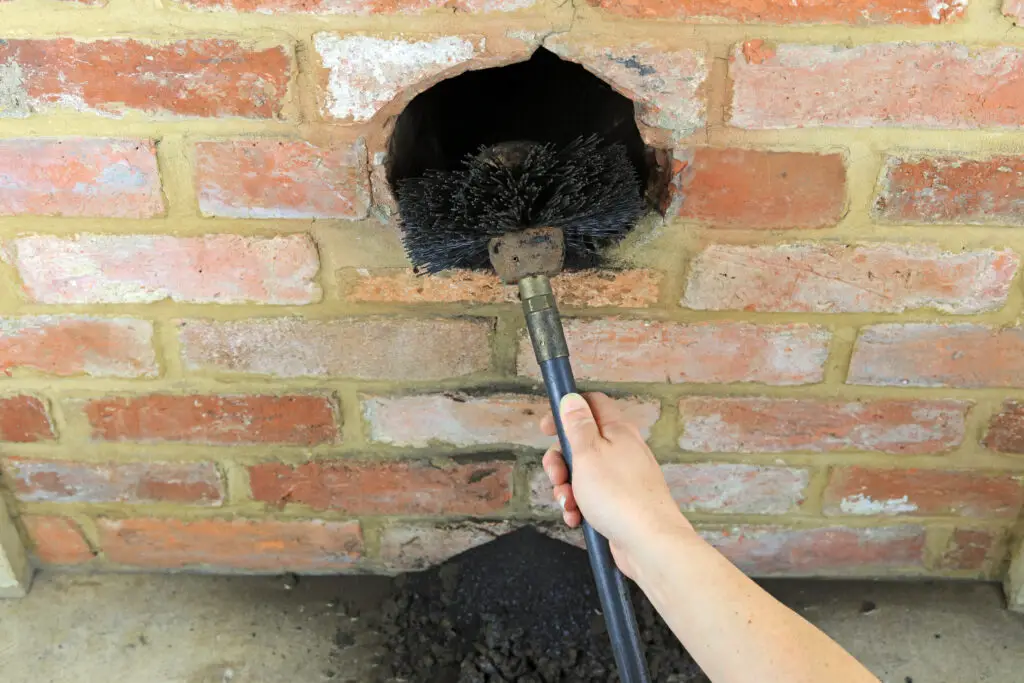
Cleaning the chimney used to be a yearly ritual, especially in homes with wood-burning stoves or fireplaces. It was often a job assigned to older children or teens, as it involved climbing up onto the roof and using brushes to clear out the soot. The task itself was dirty and required a bit of bravery, as it meant working in tight, smoky spaces. Cleaning the chimney ensured that the fire would burn efficiently and safely, but it also taught kids about the importance of safety and regular maintenance. It wasn’t the most glamorous chore, but it had to be done.
The job also helped children become more resourceful and self-sufficient. It required problem-solving, especially if there was a tricky build-up of soot or debris that needed extra attention. Though it was a messy and somewhat intimidating task, cleaning the chimney gave kids a sense of pride in knowing they’d contributed to their family’s well-being in a big way. When done properly, it meant a warmer, safer home for everyone, and that sense of responsibility carried over to other areas of life.
8. Milking the Cow
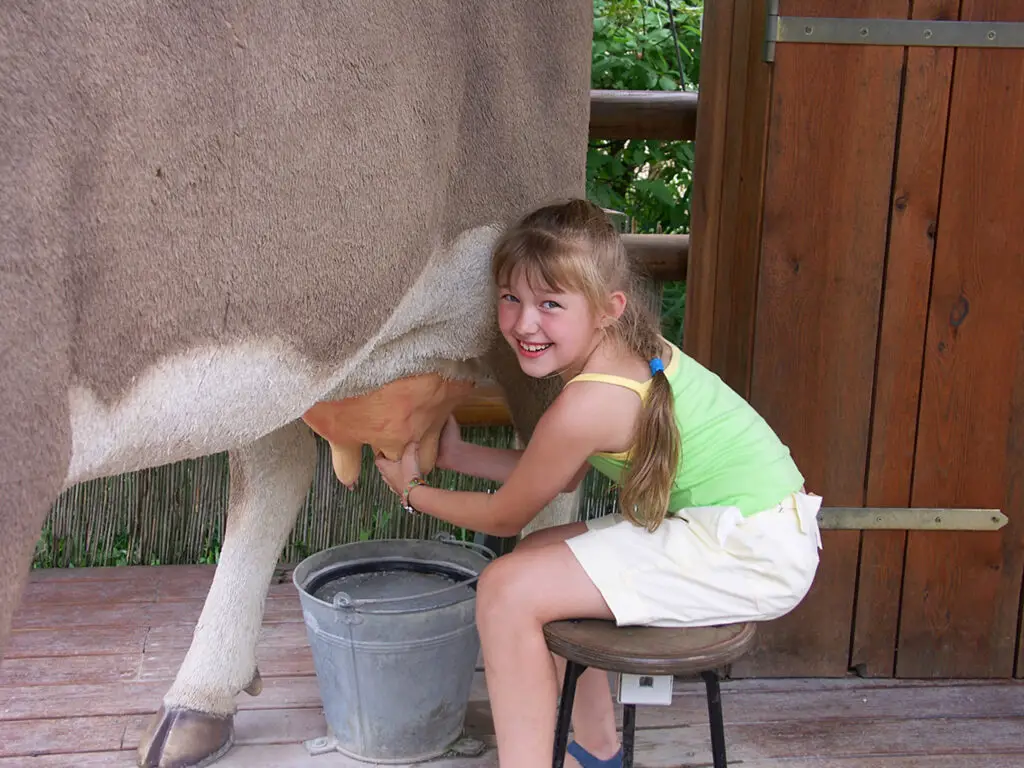
In rural areas, milking the family cow was once an essential part of daily life. It was a job that had to be done every morning and night, and kids were expected to learn the process from a young age. Milking was a hands-on chore that required patience and care. Kids quickly learned how to handle the cows gently, as well as the importance of keeping the milk clean. Over time, they became proficient at the task, learning how to milk a cow quickly and efficiently. The act of milking also helped build a connection with the animals, teaching empathy and respect for livestock.
Aside from the skill it took, milking also taught kids about routine and responsibility. The cows depended on the family to be milked regularly, and the milk itself was an essential part of the household’s food supply. It was a quiet, meditative task, one that required focus and an understanding of nature’s rhythms. For many, milking the cow became more than just a chore; it was an integral part of life on the farm.
9. Weeding the Garden
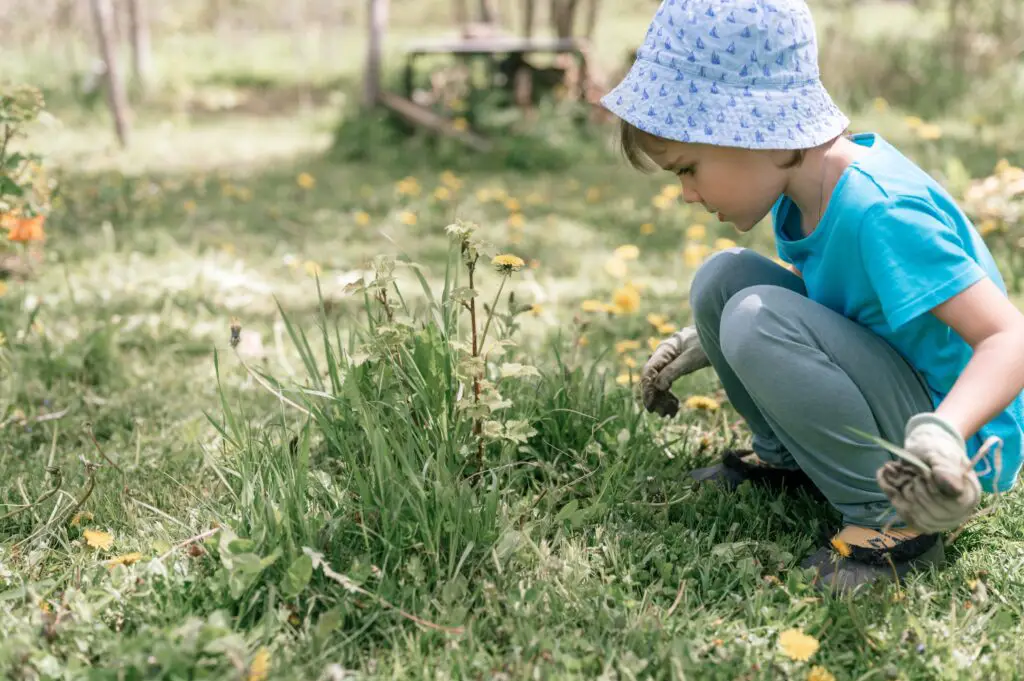
Weeding the garden was a rite of passage for children growing up in homes with large vegetable or flower gardens. It required patience and a keen eye for detail. Kids would spend hours in the garden, pulling weeds from the soil, learning to identify what was valuable and what was unwanted. This task helped them understand the concept of growth and care. Weeding was also an opportunity to connect with nature, seeing firsthand how plants thrive when given attention and care.
As the weeds were pulled and discarded, kids learned the importance of regular maintenance. A garden could quickly be overtaken by weeds if not tended to regularly. This chore taught the value of consistency and how small actions could make a big difference. It was a job that connected children to the land, giving them a sense of accomplishment when they saw the garden flourish as a result of their hard work.
10. Shoveling Snow
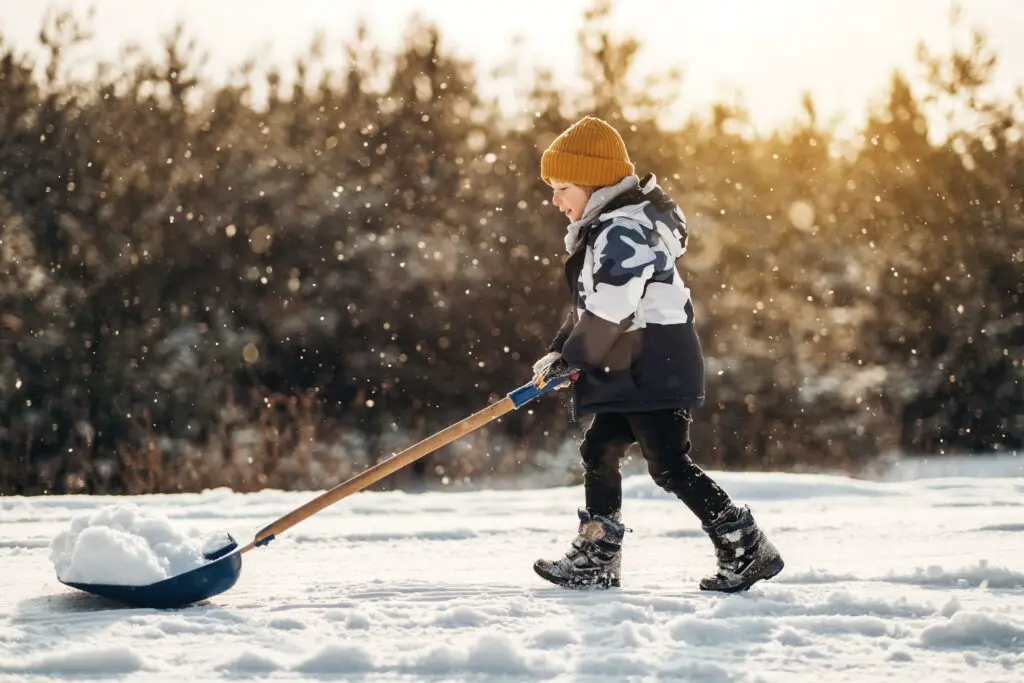
During winter months, shoveling snow was a chore that could be both exhausting and rewarding. For families in cold climates, kids were expected to help clear the driveway, sidewalks, and steps after each snowfall. Shoveling snow was hard work, especially when the snow was heavy, but it also provided a chance to work outside in the crisp winter air. This task taught kids about the importance of hard work and the need to keep safe during bad weather.
The job wasn’t just about clearing paths—it was about learning how to pace yourself and avoid injury while working in tough conditions. The satisfaction of looking at a freshly cleared driveway or path was well worth the effort. Snow shoveling also taught kids about the need to plan ahead, as the snow would keep coming, and the work was never truly finished. For many, it became a family tradition that marked the arrival of winter and the beginning of a new season.
11. Raking Leaves
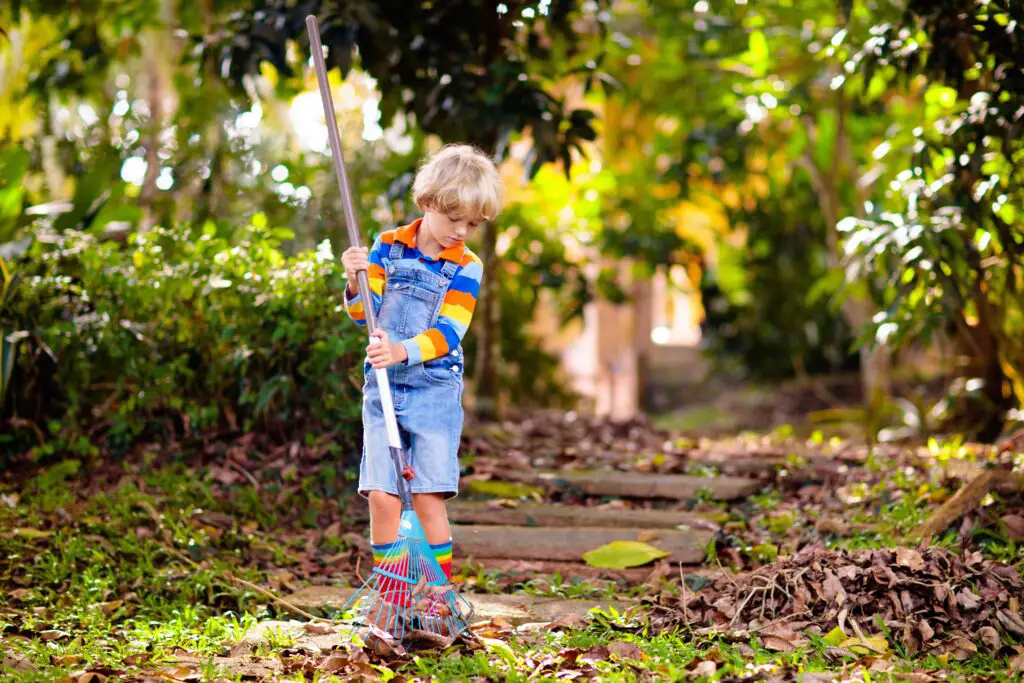
Raking leaves in the fall was another traditional rite of passage for children. The task often involved gathering piles of fallen leaves from the yard and then bagging or burning them. It was a chore that involved a great deal of physical labor, especially when the leaves had been wet or had built up over time. As the rake scraped along the ground, kids learned to work efficiently and quickly, trying to clear the yard before it became overwhelmed with more leaves. This task also involved a fair amount of planning—knowing when to rake, how to manage the leaves, and where to put them.
As kids worked through the piles, they learned to take pride in creating a neat, tidy yard. The chore was a simple one, but it gave kids a chance to feel connected to the changing seasons. The feeling of accomplishment at the end, when the yard was free of leaves, made it all worth it. And with a bit of teamwork, raking leaves could turn into a fun, even enjoyable activity, providing time for conversation and connection with family members.
12. Harvesting Crops

For kids growing up on farms, harvesting crops like corn, beans, or tomatoes was a monumental task. It required early mornings and long hours spent in the fields. Harvesting taught children not only about the labor that goes into growing food but also the importance of timing and patience.
Crops didn’t wait for you to be ready, so there was a sense of urgency when it came to getting everything picked before it spoiled. This hands-on chore allowed kids to connect with nature in the most intimate way possible—by helping bring food to the table.
